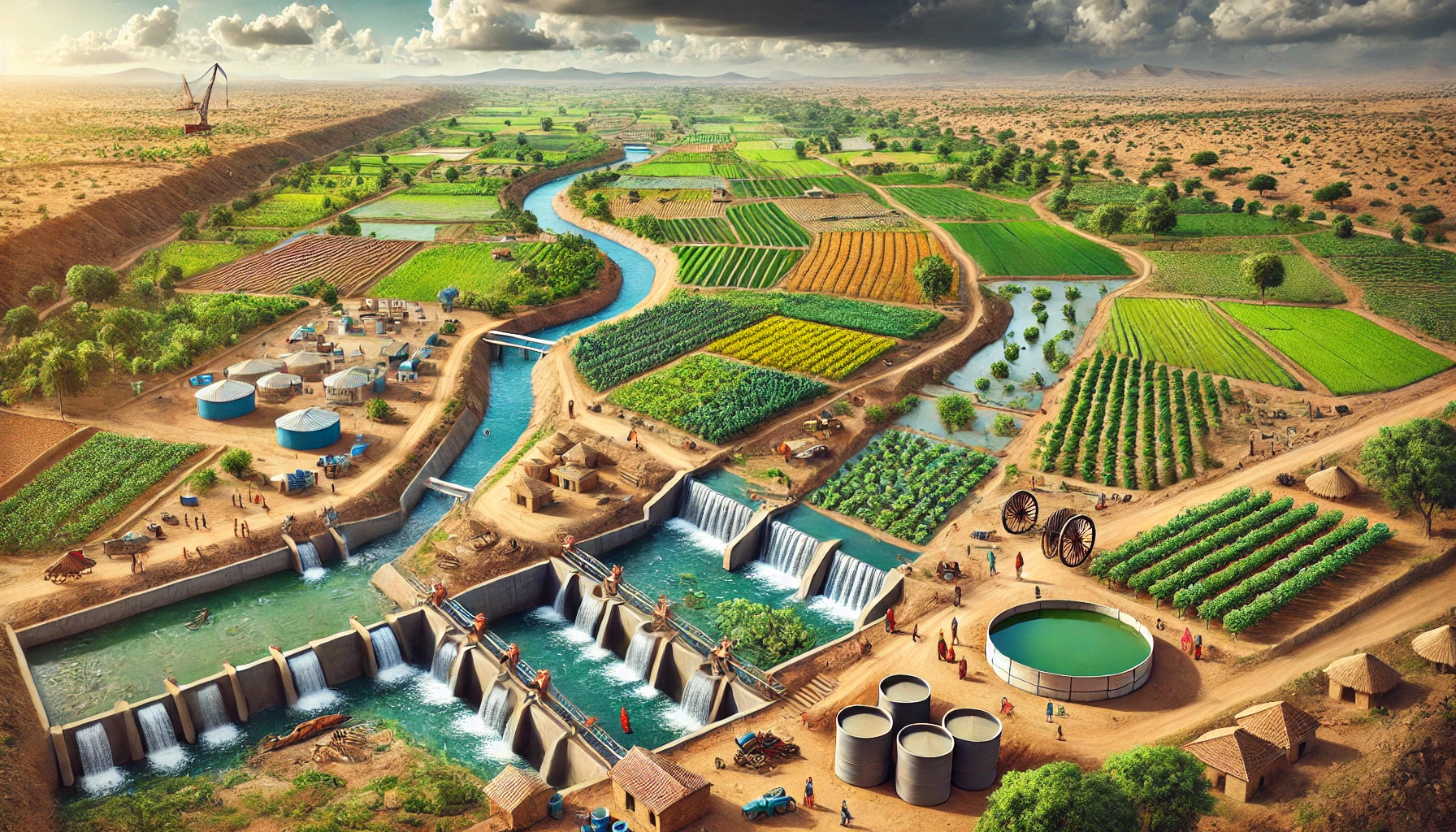Boosting Groundwater Reserves: The Unintended Benefits of India’s MNREGA Program
The study explores how the Mahatma Gandhi National Rural Employment Guarantee Act (MNREGA) in India significantly improved groundwater levels through water infrastructure projects, leading to enhanced irrigation and agricultural productivity. The impact was most notable in states with effective implementation, benefiting farmers by increasing access to reliable groundwater for irrigation.

A study by researchers from Stanford University and the World Bank explores the impact of public works programs, particularly the Mahatma Gandhi National Rural Employment Guarantee Act (MNREGA), on groundwater levels in India. The study investigates how a program initially designed to provide rural employment has had significant environmental spillover benefits by improving water infrastructure and increasing groundwater recharge. Groundwater depletion is a serious issue in India, particularly in its arid and semi-arid regions, where aquifers have experienced some of the fastest declines in water storage globally. This depletion poses a critical threat to agriculture, as more than 65% of the country's agricultural production relies on regions currently experiencing groundwater stress. Recognizing this challenge, the Indian government has implemented various programs to manage groundwater withdrawal, one of which is MNREGA. While the program was primarily aimed at providing employment, it also funded numerous infrastructure projects intended to enhance rural productivity, particularly through water conservation and irrigation improvements.
Groundwater Recharge through Public Works
The researchers used a difference-in-differences approach to analyze the effects of MNREGA’s staggered implementation across the country, focusing on how the construction of surface water infrastructure impacted groundwater levels. The data was drawn from more than 20,000 test wells across India, covering multiple time points between the late 1990s and 2012. The study found that groundwater levels increased in regions where MNREGA projects were more effectively implemented. These increases were most pronounced in states that constructed a significant number of water-related projects, such as check dams and irrigation canals. The improved groundwater recharge led to higher water availability, especially after the monsoon season, and this availability extended into the dry season, allowing farmers to irrigate a larger area of cropland, particularly high-value crops that require more water.
Uneven Benefits Across States
The study emphasizes that these benefits were not evenly distributed across the country. States where MNREGA was well-implemented saw substantial improvements in groundwater levels, while states with fewer water-related projects or lower implementation quality saw minimal or no impact. The research suggests that the increase in groundwater recharge is due to the construction of surface-level water infrastructure, which allowed rainwater to pool and percolate into aquifers. This infrastructure includes unlined irrigation canals and water tanks, which are designed to maximize water storage and promote groundwater recharge. As a result, farmers in areas with improved infrastructure were able to access more reliable and less expensive sources of water for irrigation, particularly during the dry season when surface water is scarce. This increased reliability led to changes in farming practices, with more farmers planting water-intensive crops such as rice and wheat, which offer higher economic returns but require consistent irrigation.
Soil Moisture and Irrigation Improvements
One of the key findings of the study is that MNREGA’s water-related projects had a direct and measurable impact on soil moisture levels. The researchers used satellite data to track soil moisture before and after MNREGA’s implementation and found that soil moisture increased significantly after the program’s water infrastructure projects were completed. This increase was particularly noticeable during the dry rabi season, when irrigation is critical for maintaining crop yields. The availability of irrigation water during this period is largely dependent on groundwater, and the study shows that MNREGA’s projects helped increase groundwater recharge, providing farmers with a more reliable source of water during the dry months. This, in turn, allowed them to expand the area under cultivation and irrigate more intensively.
Wells as the Key Source of Irrigation Water
The researchers also examined the sources of irrigation water used by farmers and found that the majority of the additional irrigation after MNREGA’s implementation came from wells. This finding is consistent with the hypothesis that MNREGA’s water-related infrastructure projects improved access to groundwater rather than surface water. There was no significant increase in the use of other irrigation sources, such as canals or tanks, suggesting that the program’s impact was primarily through improving groundwater recharge. This increased reliance on wells for irrigation allowed farmers to shift towards higher-value, water-intensive crops, thereby increasing their agricultural productivity and income.
Broad Implications for Rural Development
The study highlights the broader implications of MNREGA’s success in improving water infrastructure. By increasing groundwater availability, the program not only provided employment and poverty relief but also enhanced rural productivity and resilience to droughts. The findings suggest that large public works programs like MNREGA can have significant environmental and economic spillovers, contributing to long-term sustainability in regions facing water scarcity. However, the researchers also point out that the effectiveness of such programs depends heavily on the quality of implementation, as evidenced by the varying results across different states.
The paper underscores the importance of well-designed public infrastructure projects in addressing environmental challenges such as groundwater depletion. While MNREGA was not initially intended as a water management program, its focus on building rural infrastructure had the unintended but highly beneficial consequence of improving groundwater recharge. This, in turn, has had a positive impact on agriculture, particularly in regions where access to irrigation water is critical for maintaining crop yields and improving farmers’ livelihoods. The study calls for further research into the long-term cost-effectiveness of such interventions, particularly in terms of their potential to enhance agricultural productivity and rural development.
- FIRST PUBLISHED IN:
- Devdiscourse










